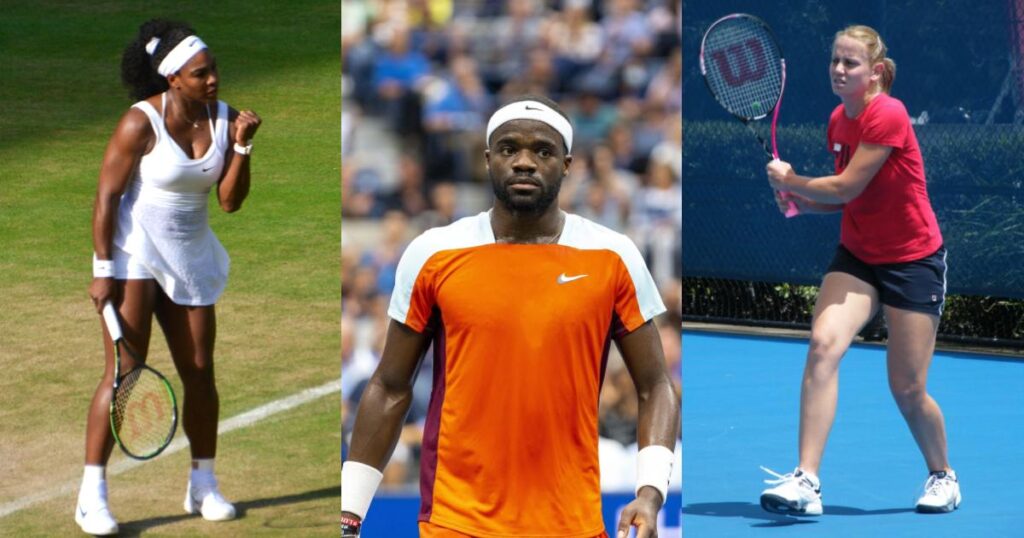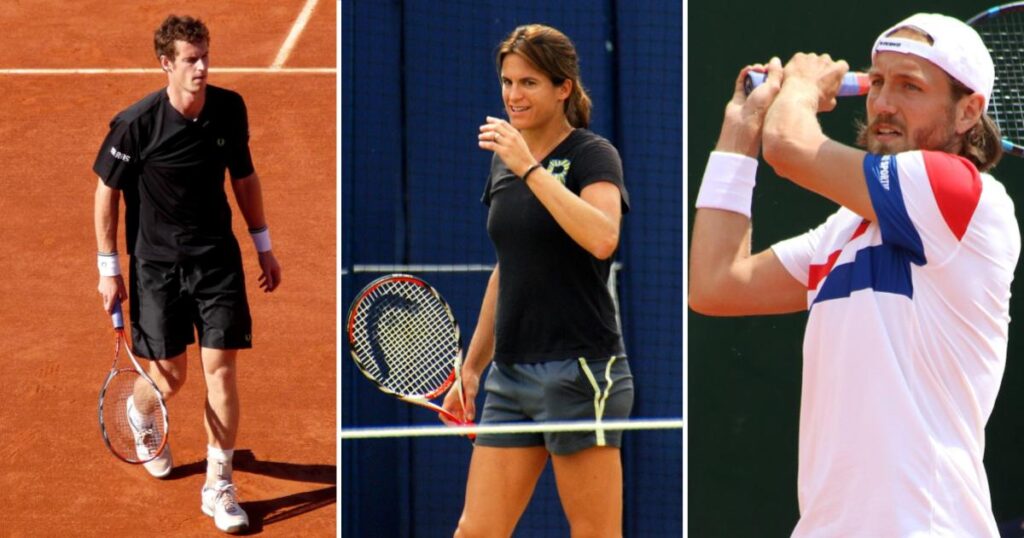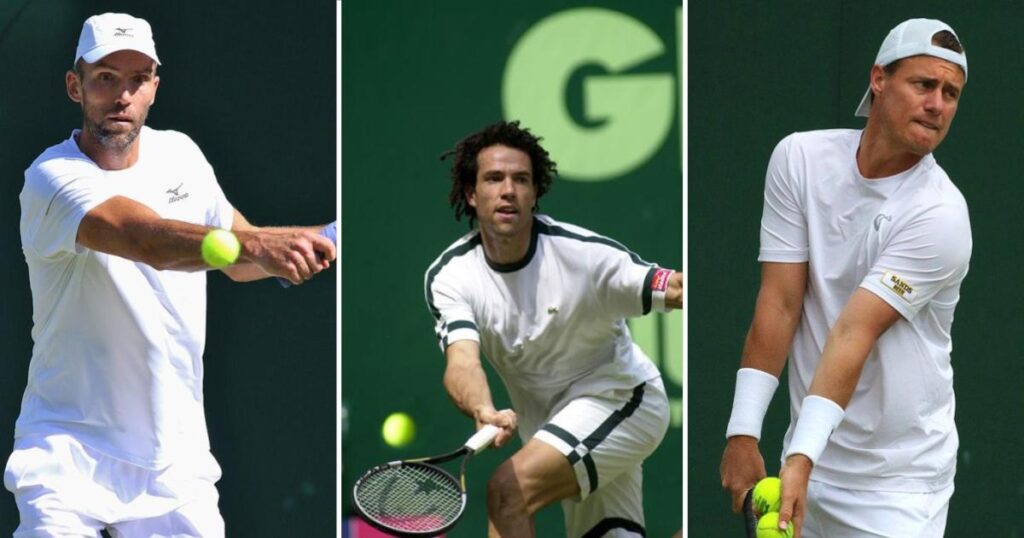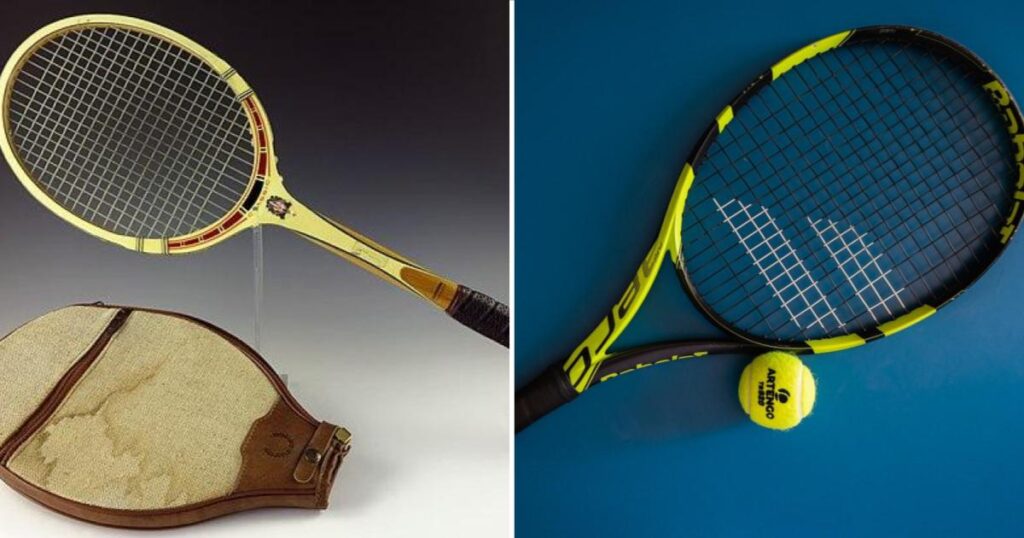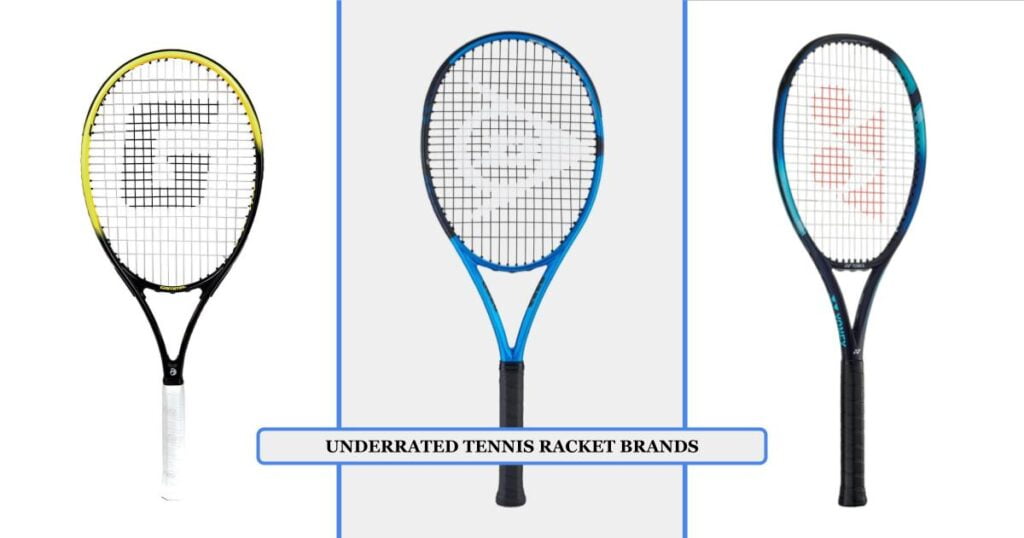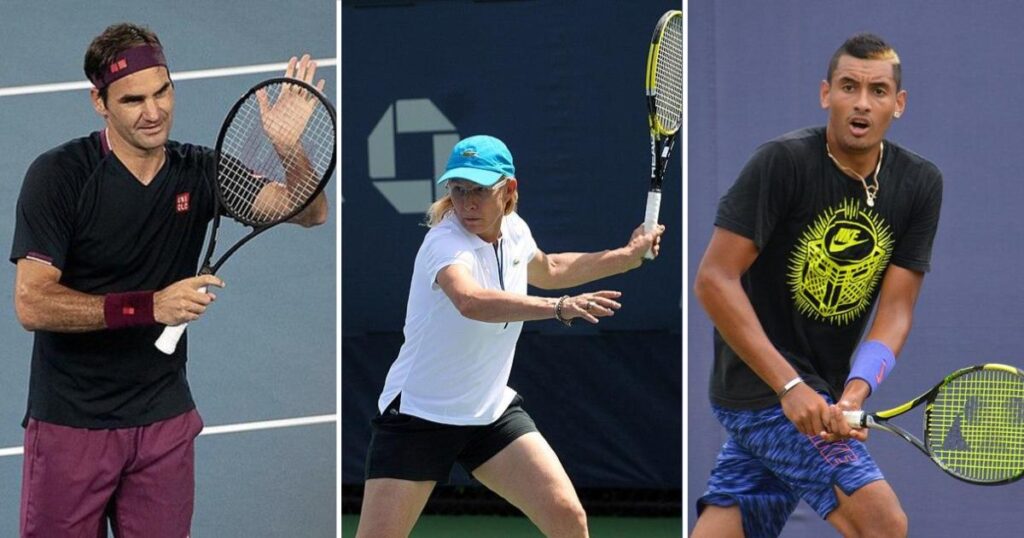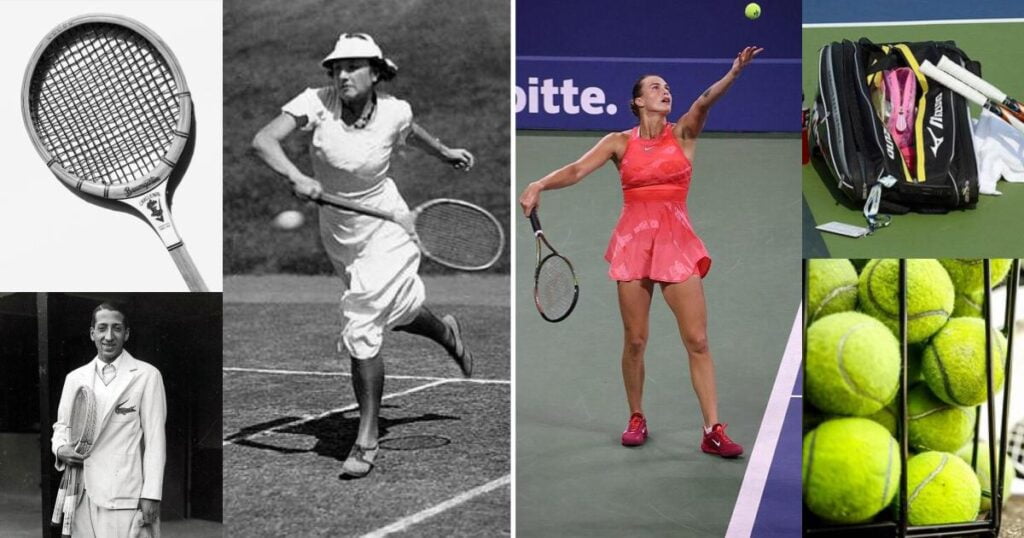Sometimes all you need to accomplish your goals is passion. Tennis is one of the toughest sports in the world, and it requires immense passion from the player to succeed. Otherwise, it is difficult to play tennis at a professional level due to the highly competitive nature of the sport. Sometimes, all you need to accomplish your goals is passion.
However, for some players, passion for the sport alone is not enough to succeed. They must also fight against the challenges they face off the court. Tennis players from modest backgrounds often have to sacrifice a lot to achieve their goal of playing tennis professionally.
In this post, we will look at the lives of professional tennis players who, despite coming from small towns and not having financially well-off backgrounds, still made their mark on the professional tennis circuit. Their journey and achievements have inspired many aspiring tennis players and tennis lovers alike. These players did not let their social status or financial constraints dictate their lives. Instead, they fought against them and emerged as winners.
1. The Williams sisters

“A champion is defined not by their wins, but by how they can recover when they fall.” – Serena Williams
These words by Serena Williams reflect the journey of the Williams sisters throughout their tennis career and beyond. Venus and Serena Williams spent their childhood in Compton, California. Compton was one of the areas hardest hit by the economic depression in the United States. Economic depressions can lead to many other social challenges, such as increased crime rates, theft, and gang wars. The Williams sisters and their family experienced all of this during those years.
Due to lack of money and facilities, the Williams sisters’ father and mother had to train themselves in the basics of tennis using books and practice so that they could coach their daughters. In the early days, and until Venus and Serena Williams competed in junior tournaments, their father was their coach. They had to use the public tennis courts for practice because they couldn’t afford a private tennis academy. This is one of the reasons why their father homeschooled the Williams sisters.
During their practice sessions, they had to deal with the problems caused by local gangs and frequent shootings in the area. However, none of these things stopped the Williams family from continuing their training. The Williams sisters lived with their parents in a small two-bedroom house with their three other siblings.
Serena and Venus Williams life story has inspired many female athletes in the world. Persistent hard work from the sisters and valuable support from their parents earned them many accolades in the tennis world. What we can learn from their life journey is that if one stays focused on the path that they have taken and keeps moving forward, crosses all the hurdles and roadblocks in the way eventually gets success in what they want to achieve.
2. Younes El Aynaoui

Younes El Aynaoui is a Moroccan former professional tennis player. He started playing competitive tennis in his late teens. At the age of 18, he went to the Nick Bollettieri Tennis Academy to spend a week at the tennis camp. That one week he spent at the tennis academy inspired him to pursue tennis as a career. His father, however, did not like the idea and asked him not to take up the sport.
Aynaoui came from a humble background, and for that reason, his father opposed his idea to pursue tennis as a profession. In his father’s point of view, tennis was not a real job and not something that one could make a living out of. Despite his father’s disapproval, Aynaoui was determined and decided to follow his heart. The decisions we make have their own consequences, and Aynaoui now had to think about how he would support his training and related expenses.
During his training days, he did all sorts of jobs to cover his training expenses. He became the academy bus driver, worked as a cleaner, strung rackets, babysat, helped the campers, and so on. Ultimately, he stayed with the decision he had made and proved it right by doing whatever it took.
At the age of 31, in 2003, Aynaoui reached his career-best ranking of world no. 14. This was something he must not have thought of when he started his pro career, because the conditions were not at all favorable to him.
Aynaoui hails from the capital of Morocco, Rabat, which experienced economic instability for many years during that time. The rate of unemployment and idle labor force increased over the years, prompting many people to leave the city in search of jobs. Coming from such a background and deciding to take up tennis as a career required immense mental strength, which Aynaoui surely had.
Starting a new stint in life without the support of family and friends is a difficult challenge, but Aynaoui took the challenge head-on, following what his mind told him at the time and showing faith in himself. The most important thing is to show faith and confidence in your own ability, even when no one else is doing it for you.
When you are confident about the future course of action you intend to take, things become a little easier. This is because your mind is always clear about what needs to be done, and then it all depends on the execution. Aynaoui is certainly a great example of how to overcome life’s hurdles by keeping the self belief backed by hard work.
3. Frances Tiafoe

“The circumstances in my life have definitely changed. But those poor, poor jokes back then really hurt. It made you feel, in the back of your mind, that you weren’t cut from the same cloth.” – Frances Tiafoe
Frances Tiafoe is an American tennis player born in 1998 who started his professional career in 2015. As of the writing of this post, his career-high singles ranking is No. 10, according to the ATP. At the age of 17, he became the youngest player from the United States in the main draw of the French Open. His parents immigrated from Sierra Leone due to the war conditions in their country. His father decided to immigrate to the US. Sierra Leone is a country in West Africa that was involved in a civil war in the early 1990s that lasted over a decade. His father worked as a laborer on the construction site of a tennis center in Maryland.
“It was a pretty small room. There were two massage tables in there, and my father slept on one and me and my brother were small enough to share the other.” – Frances Tiafoe
During his childhood days, Tiafoe and his brother Franklin lived at the tennis center to save on apartment rent. Adversities can sometimes provide us with opportunities, and it is up to us to grab them. Because Tiafoe spent all his time at the tennis center, he became familiar with it and started training in tennis at the age of 4.
In an interview with Andscape.com, Tiafoe shared the problems he faced during his childhood, such as not having their own house or enough money to satisfy even basic needs. To make more money, he took on extra hours, which created longer days and led him to eventually convert a storage room adjacent to the coach’s office into a place where he could sleep and rest for a few hours.
Tiafoe is one player in modern-day tennis who earns admiration from not only tennis fans but also his fellow players simply because of the amount of effort he has taken to reach where he is today. Stories like his keep the spirits of people who want to achieve something in their lives.
4. Max Mirnyi

Max Mirnyi is a Belarusian former tennis player. He runs a tennis training center named after himself in the capital city of Minsk, Belarus. The ITF-approved center provides tennis training to children from all walks of life, regardless of their privilege.
He was born in mid-1970, when political instability in Belarus was at its height. The difficulties he faced during that time in his childhood inspired him to open his own tennis center to the general public. Political instability in Belarus during the 1970s also resulted in economic crises. When Mirnyi started playing tennis, his parents did not have enough resources to fund his training.
During his junior career, he had to travel to New York, leaving his family behind. He worked as a hitting partner for Tatiana Ignatieva, a young sensation who had been signed by an American agency. To support Mirnyi in a new country, his father had to use all of his savings and sell almost all of his belongings to move to New York. With little money in hand, they somehow managed to find an apartment with the help of a friend by agreeing to help the owner renovate it. Mirnyi continued his tennis training and junior career in the US.
After years of hard work, he reached his career-best singles ranking of number 18 in 2003. This is an achievement in itself for someone who came from a small place with little money but lots of promise and talent. In the same year, he reached his best ranking of number 1 in doubles. In 1998, Max Mirnyi won the Wimbledon and US Open mixed doubles titles with his partner, Serena Williams, who is herself a great inspiration for young tennis players.
5. Pancho Segura

Segura started learning about tennis by hitting a tennis ball against a backboard at the Guayaquil Tennis Club, where he lived with his father, the club’s caretaker. He also worked as a ball boy and servant at the club. In 1940, he moved to the United States from Guayaquil, Ecuador. During his early teens, he began playing as a hitting partner for the club’s tennis players.
As a child, Segura not only faced financial difficulties, but he also suffered from rickets, a disease caused by calcium deficiency in the bones that weakens them. Despite all of these challenges, Segura never gave up on his passion for tennis, and his accomplishments are truly inspiring. He taught himself how to play tennis because his father couldn’t afford to pay for lessons.
After his playing career ended, Segura began coaching young tennis players. Renowned tennis player Jimmy Connors took lessons from Segura when he was 16 years old. Segura died at his home in California at the age of 96 from Parkinson’s disease.
Self teaching as a term is as fascinating as its application in real life. Tennis has evolved as a sport in the last 100 years and the one aspect that has changed to a greater extent is quality of coaching. Today, coaches need to have a proven track record and the prerequisite skills to perform their job well. If we go back in time to Segura’s playing days, things were different. Having a coach or even some level of assistance was a big deal because tennis players back then had little to no financial resources to hire them. Segura was different, though. He decided to take control in his own hands and self-taught himself the nooks and crannies of the game.
6. Jelena Dokic

Jelena Dokic grew up in poverty. She and her family used to live in a shed in Serbia that was infested with rats. She was born in Croatia, although she spent most of her childhood until the age of 11 in Serbia. Due to the war in the Balkans region, her family fled to Serbia for shelter.
The economic and political crisis of the 1980s and the series of interethnic Yugoslav Wars had a significant impact on many countries in Europe. Neighboring regions of Croatia, such as Bosnia and Herzegovina and Kosovo, were primarily affected by the war. Jelena Dokic and her family had to endure all of these hardships, just like other citizens residing in these regions.
After their short stint in Sombor, a city in Serbia, Dokic was 11 years old when her family traveled to Australia. She started her junior career in tennis in Australia, and never looked back.
It didn’t take her a lot of time to shine in the fascinating world of tennis. At the age of 16, she achieved an amazing feat by beating Martina Hingis in the Wimbledon Championship in 1999 in two straight sets. To date, her record of beating the women’s world number 1 in the Wimbledon qualifier remains unbroken.
Dokic’s life journey has been inspiring, and we can learn a lot from her. Her journey from living in poverty to becoming a professional tennis player is fascinating. Playing a sport at a professional level comes with its own set of challenges that a tennis player must overcome to make it to the pro level. Add to that the struggles that one has to face on a daily basis to fulfill basic needs. To come out of it requires immense courage and grit, which Dokic surely had.
7. Maria Sharapova

Tennis player Maria Sharapova was born in a small town called Nyagan, Russia. Her initial struggles in childhood made her stay grounded and appreciate the value of money. This is reflected in the following quote of hers:
“Money is not the pinpoint of happiness. And I think growing up in that environment — growing up working for every single dollar, in a sense, that I’ve earned today — makes you realize that.” – Maria Sharapova
At the age of 7, Sharapova and her father came to the United States with $700, which was all he had saved. They came to the U.S. to receive professional training at the Nick Bollettieri Academy, on the recommendation of former tennis player Martina Navratilova. Navratilova had seen a lot of promise and talent in the 6-year-old Sharapova, and thus recommended that her father bring her to the U.S. for better training.
In the early days of her life in the United States, the language barrier posed a challenge for Sharapova and her father, as neither of them spoke English. As Sharapova began her training at the academy, her father remained worried about how to finance her fees and expenses. He had no choice but to work multiple low-paying jobs to cover their daily expenses and the cost of her training.
The only relief for Sharapova and her father was the scholarship she received from the academy, which she was awarded based on her potential and skills at such a young age. They rented a small apartment in the U.S. and had to sleep on a pull-out couch. Sharapova also borrowed used tennis clothes from other girls at the academy to wear during training sessions. Sharapova, an Olympic medalist, overcame all of these obstacles and challenges in later years with her stellar performances.
To start a new career by going to a new country presents cultural and language barriers, and, in addition, the feeling of uncertainty about how to tackle many everyday problems, such as money, shelter, and training, can be a huge burden. Sharapova and her father went through everything from the moment they arrived in the United States. But when you have faith in your talent and capabilities, you can face any problem that comes your way.
8. Teliana Pereira

“I was born in a small town where life is very difficult. There’s a lot of poverty there and it’s hard to get an education.” – Teliana Pereira
Teliana Pereira is a professional tennis player from Brazil who was born in 1988. She became the first Brazilian woman to win a title on the WTA Tour since 1988, a remarkable achievement. In 2015, Pereira reached her highest career singles ranking of No. 43. She was born in the city of Águas Belas in the state of Pernambuco, and was coached by her elder brother in her early days.
Pernambuco was an economically poor and rural state situated in the northeast of the country at that time. Pereira and her family used to live in a small house. She and her siblings had to help the family financially from a very young age. In her teens, she started working as a ball girl at a tennis club. Her interest in tennis gradually increased during those days, and eventually, she decided to pursue tennis as a career.
Her father decided to move to a bigger city to find a better job and pay scale. He started working at a tennis academy in Curitiba, Brazil. Pereira and her family moved there too, and they all had to find some kind of work to put food on the table.
“We had always had food on our table, but that was because we all were working, not that we had much of a choice.” – Teliana Pereira
Many tennis players from financially unstable regions tend to play the sport or do a related job, not only to pursue their ambitions but also to provide financial support for their families. Tennis is an individual sport, but it requires coaching and guidance in the initial stages of a career. Pereira knew from the start that if she wanted to continue her training, she needed to cover the associated expenses herself. From an early age, she worked as a ball girl at the club, which gave her early exposure to the requirements of the sport and mentally prepared her for it.
9. Novak Djokovic

Djokovic was four when his parents gifted him a toy racket and a foam ball. In no time, the two toys became his favorites and made him fall in love with the sport. Djokovic was from a financially well off family as his parents had a fast food parlor as well as a business dealing in sports equipment. But when you live in a war-affected country or region, satisfying some of the basic needs sometimes becomes very challenging, no matter what walk of life you are from.
Serbia was involved in the Yugoslav Wars from the early 1990s to 1999. During his teenage years, Novak Djokovic and his family witnessed several war situations in and around their region and faced many difficulties. War situations usually result in a shortage of basic necessities because most resources are spent on funding the war and its related activities. It is the common people who have to face the repercussions of these situations. Djokovic, along with many others, used to wait in line for hours for basic requirements such as food, milk, and water.
“My upbringing was in Serbia during several wars during the ’90s, difficult time, embargo in our country where we had to wait in line for bread, milk, water, some basic things in life.” – Novac Djokovic
Due to the constant bombing in the nearby area, Djokovic and his family, as well as other people from their area, used to stay at night in a building with shelter and a fence. It was an effort for people to find a safe place for their families. Living in a war-affected area, the noise of bombing, and the shaking of the ground were all terrifying experiences for Djokovic as a kid.
Djokovic is known for his aggressive playing style when he is on the court. His childhood in those tough surroundings explains his aggressive playing style. When you experience tough situations early in life, they can sometimes turn into blessings in disguise. The hardships that Djokovic went through in his teen years helped him to prepare for the challenges that he faced during his professional tennis career.
10. Althea Gibson

Althea Gibson is the first African American to win a Grand Slam championship. She achieved this record in 1956. Overall in her career she has won 11 Grand Slam tournaments. Many today’s female tennis players idolizes her and praises the impact she created during that time.
“At a time when racism and prejudice were widespread in sports and in society, I am honored to have followed in such great footsteps.” – Venus Williams in praise of Althea Gibson
Born in Clarendon county in South Carolina Gibson was born during the period of great depression in the United States. When The Wall Street Crash in the year 1929 which resulted in economic depression in the US happened Gibson was merely two years old. Born to parents who used to work as sharecroppers on a cotton farm Gibson saw financial difficulties and adversities that come along with it from a very young age.
She started her tennis career with amateur tennis but during those days amateur tennis players didn’t earn prize money. In her teenage days she took shelter in the Society for the Prevention of Cruelty to Children. She made the decision because during those days she not only saw violence but also experienced it from her own father.
The street in front of Gibson’s house was her playground in the literal sense. The area in front of her house was a designated play area so her interest in sports and not particularly in tennis grew during those days naturally. She had athletic build and by nature she was very competitive. Due to her passion towards sports she dropped out of school at a very young age.
Althea Gibson’s contributions inspired many women after her to take up the sport. Her fearless attitude and confidence in her own abilities are something that every tennis player, or for that matter anyone who is facing some kind of adversity in pursuit of something bigger, can learn from. Women’s tennis players such as Billie Jean King and Serena Williams were inspired by Althea Gibson’s tennis career and overall life, and they passed that inspiration on to the next generation.
11. Ignacy Tłoczyński

Ignacy Tłoczyński was a Polish tennis player and World War II soldier. He was born to a poor family in 1911 and took up tennis to earn money to support them.
During World War II, the rules of amateur tennis were such that they allowed only professional tennis players to receive financial aid from tournament organizers. The war severely disrupted the tennis schedule, preventing Wimbledon and the French championships from being played for nearly six years, starting in 1940. After more than two decades, in 1968, during the Open Era, professional players were allowed to compete in Grand Slam tournaments alongside amateurs.
To improve his financial situation and support his sport, he moved to Warsaw, Poland, and started working at an insurance company. At the age of 18, Tłoczyński participated in his first Polish Championship.
In the late 1940s, news spread that Tłoczyński had gone missing. However, he was later found working in a cafe with fellow female tennis player Jadwiga Jędrzejowska, who was also his doubles partner. In 1955, at the age of 44, he officially retired from professional tennis and took a job as a coach at the Dunlop Tennis Club in Edinburgh.
12. Ivan Dodig

Ivan Dodig is a Croatian professional tennis player who primarily plays doubles competitions. He has won seven Grand Slam doubles titles. His highest doubles ranking of No. 4 came in 2015. During his childhood, Ivan Dodig lived in Medjugorje, a small town that is now part of Bosnia and Herzegovina. During that time, Dodig did not have a tennis court facility near his home to practice. Therefore, he had to walk for three hours early in the morning to reach the nearest tennis facility.
With immense hard work, he turned pro at the age of 19. But that didn’t make it any easier for Dodig. At that time, the infrastructure and support that young tennis players in Croatia needed from authorities was not available. After turning pro, he neither had the adequate resources to meet his training requirements nor enough funds to participate in professional tournaments.
Finding sponsors for a sport is difficult when it is not well supported in certain regions. Dodig did not receive any sponsorship for his professional tournament participation. With no other option left, he gathered money from every possible source. He saved all the prize money he earned from other small tournaments to cover his travel costs for professional tournaments.
In an interview with Al Jazeera, he once said that there were days when he went days without eating anything. He used to sleep on the floors of the hotel rooms where his friends worked, and he also had to be careful not to be spotted by the hotel staff. Affording a hotel room back then was impossible for Dodig, as the prize money he received from matches was much less than the daily cost of a hotel room.
Dodig faced all sorts of obstacles for years, but he never thought of quitting tennis. His success in the sport has inspired many young Croatian tennis players to pursue tennis as a career.
13. Manuel Santana

Manuel Santana, also known as Manolo Santana Martínez, was a Spanish tennis player who died in 2021. He was ranked world No. 1 amateur player for two consecutive years, in 1965 and 1966. In 1966, he won the Wimbledon tennis championships in a surprising victory over the sixth seed, Dennis Ralston.
Santana was born into a poor family in Madrid. He first encountered tennis when he became a ball boy at a very young age. Due to financial constraints, Santana left school at the age of 10. He would skip school to help tennis players at a club, in exchange for tips. At the club, he would prepare the clay court for two siblings from a wealthy family. They not only compensated Santana for his work, but they also encouraged him to start going back to school. The family also provided financial help to Santana’s mother.
At the age of 13, Santana won the ball boys’ tennis competition at the Velázquez Club. Due to his efforts and performance, he was granted official membership at the club.
Santana’s journey from a ball boy who used to collect tips to a professional tennis player is one that can inspire anyone. Financial difficulties are perhaps the worst kind of adversity that an athlete can face. Training for a sport with the hope of playing it professionally in the future requires not only immense hard work but also support in the form of assistance and equipment. This support requires money, and shortage of financial resources is one of the major reasons why many talented young players have to quit the sport of their choice and pursue something that will provide food on the table.
I hope these stories of professional tennis players have inspired you to continue working on future endeavors. Tennis is an aesthetically pleasing sport, but what makes it even more beautiful are stories like these. Hope is a powerful concept in life that can become obscured when things don’t go our way. But we must remember that we cannot cross an ocean without facing waves, storms, and strong winds. We have to face and overcome all these obstacles to cross the ocean. Only then will the journey come to an end and we will reach our destination.
Also see:
Famous Tennis Players Who Played Without a Coach
Pro Tennis Players Who Started Taking Tennis Lessons Relatively Late
Male Tennis Players Who Have Worked with Female Coaches During Their Pro Careers
Tags: Tennis Insights
